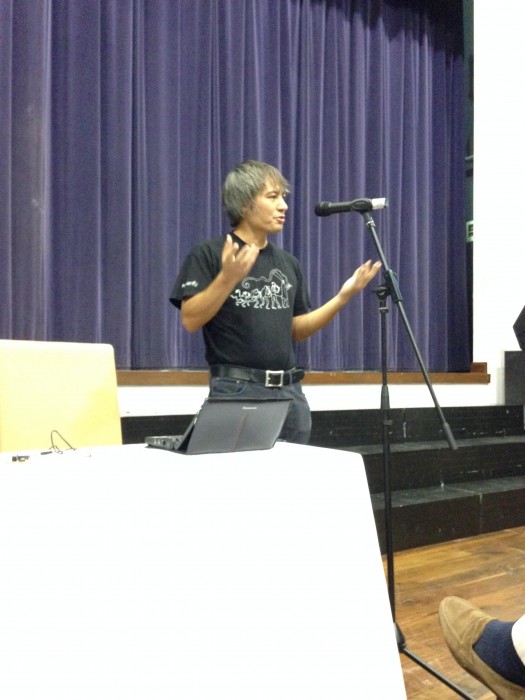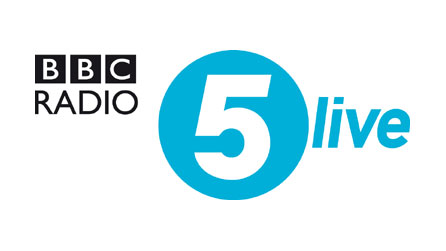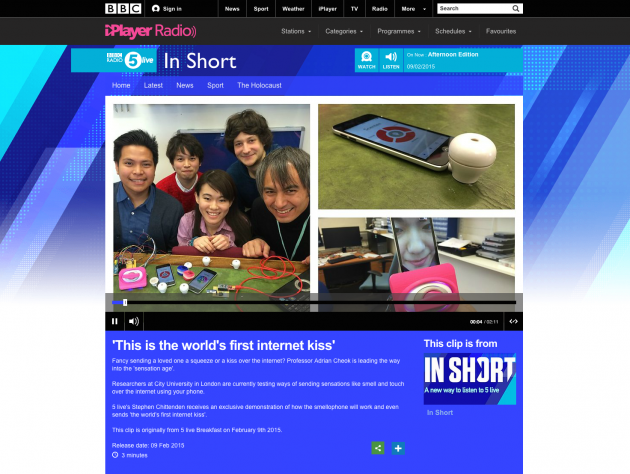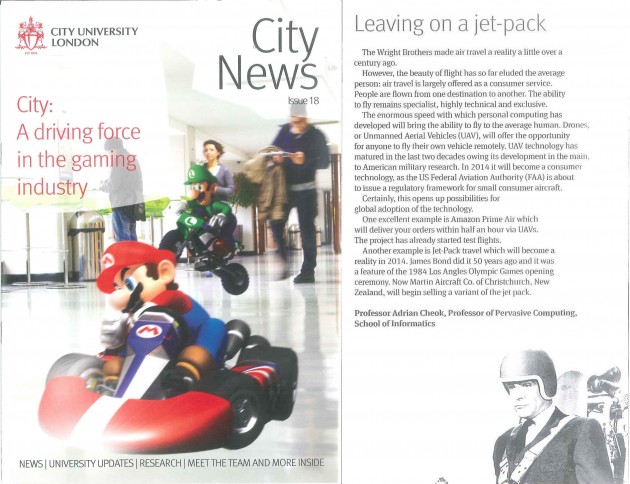Sunday Speaker at Marlborough College Malaysia
Adrian David Cheok, who is setting up a new research lab in Iskandar, treated the boarders to an excellent Sunday morning talk. He spoke about research in human-computer interfaces and developing new types of communication environments using all the senses, including touch, taste, and smell. One of the innovations was clothing that could reproduce a human hug, which could be sent remotely. Gary Tan and Syafiqah Amir Hamzah volunteered to describe their experience when smells were directed to a mobile phone, and Marielle Lee put herself forward bravely to try the taste test sent by computer. The ramifications for the future enthralled the pupils.



Radio Interview on BBC Wales about Digital Taste and Smell

Adrian Cheok talks about Digital Taste and Smell on BBC Wales – Good Evening Wales
Listen on BBC iPlayer: http://www.bbc.co.uk/programmes/b051rmtr
Live Radio Interview at BBC London – The Breakfast Show

Adrian Cheok talks about Digital Taste and Smell on The Breakfast Show with Penny Smith and Paul Ross, BBC London.
Listen on BBC iPlayer: http://www.bbc.co.uk/programmes/p02hnyhf


BBC Radio 5 Live Interview – ‘Digital Smell and Taste’
BBC Radio 5 Live Interview – ‘This is the world’s first internet kiss’

06:18am, 9 Feb 2015 on BBC Radio 5

http://www.bbc.co.uk/programmes/p02jlvqg
Also see: Smell and Taste
Share touch, smell and taste via the internet

The smell of freshly cut lavender – like so many fragrances, it has the power to conjure up a whole set of memories and feelings – imagine being able to share that with someone on the other side of the earth.
Sharing smell, but also touch, and even taste – that’s the vision of a London university professor who has developed a range of devices he hopes will transcend the current limitations of online communication.
Today, our interaction with a smartphone or a computer is essentially audio-visual. Adrian David Cheok, Professor of Pervasive Computing at City University London, wants to involve all of our senses.
“Imagine you’re looking at your desktop, or your iPhone or laptop – everything is behind the glass, behind a window, you’re either touching glass or looking through glass. But in the real world, we can open up the glass, open the window and we can touch, we can taste, we can smell. So, what we need to do is we need to bring computers – the way we interact with computers – like we do in the physical world, with all of our five senses,” says Professor Cheok.
To communicate smells via the internet, Cheok and his team have created the “Scentee” device, which connects to an app on your smartphone. An aroma is released when you receive a text message or when the phone clock alarm goes off.
“Scentee is a small device than you can attach into your mobile phone, into the audio jack. And what happens is that it allows you to send a smell message through your mobile phone. So, for example, it could be someone’s birthday and you can send them the smell of strawberry,” explains Professor Cheok.
Fragrances include florals like lavender and rose, fruit like strawberries or invigorating aromas like coffee.
One device plus 3 aroma cartridges will set you back some US$70 or around 60 euros. Each replaceable cartridge contains around 100 sprays. Its developers say the technology can also be used in tandem with a smart phone alarm clock to fill a room with an aroma and influence a person’s mood.
But Cheok wants to go further, beyond smell, and offer users a chance to share touch via the internet. So, together with a team of researchers in Japan, he has developed what’s been dubbed the “world’s first tele-hug ring”.
“With this device here – it’s called RingU and you can put it on your finger – it connects to your smartphone so you can connect to anyone in the world through the internet. So I can be in London and my friend can be in Tokyo, and I can squeeze my finger and then they’ll get a squeeze on their finger through the internet. It’s a way of touch communication with small mobile devices,” says Professor Cheok.
When one user “hugs” the ring, the touch sense is digitally transmitted to the recipient’s ring which then replicates the sensation. The ring communicates with your smartphone using Bluetooth technology. It can even display the date, time and location so-called “hugs” were sent and received.
Moving on to taste now, and Cheok’s most surprising invention: the “Electronic Taste Machine”. Wedged between two metal sensors, your tongue is tricked into experiencing various tastes, ranging from sour to bitter, salt or sweet, depending on the frequency of the electrical current passing through the electrodes.
And like with the other devices, these electrical signals can travel through the Internet.
“We’ve researched and found certain frequencies and amplitude of electrical current can generate artificial taste,” explains Professor Cheok. “So, basically what happens is you put these two silver electrodes in your mouth, you put your tongue in between and then it stimulates electrically your tongue and you get a virtual taste perception in your brain.”
Cheok is the founder of Singapore’s “Mixed Reality Lab”.
In mixed reality, the real and virtual worlds will eventually merge as one, to produce new environments where physical and digital objects will co-exist and interact in real time.
Copyright © 2015 euronews
http://www.euronews.com/2015/02/02/share-touch-smell-and-taste-via-the-internet/
Smarter phones that smell, taste and feel great that smell, taste and feel great
![]()
Imagine an Apple iPhone that smells like an apple or a Blackberry that taste sweet or a Windows Touch-phone that squeezes you in mid-conversation. Scientists in London have made more progress in the now-common smartphone to make the audio-visual communication transcend tool what engineers call “the glass barrier” and create an experience that is more 4-D.
Professor Adrian David Cheok of the University of London said of his technology, “In the real world, we can open up the glass, open the window. We can touch, we can taste, we can smell in the real world.”
How do inanimate smartphones deliver the sensation of senses?
First you will have to open your mouth and say, “Ah!” The human tongue’s surface has molecules, also known as tastebuds, that through chemical ionization send the brain electrical signals of a specific amplitude depending on which type of taste: sour, sweet, salty, and bitter. Scientist have found a way to send these signals — minus the calories — to savor. This process was explained by Professor Cheok.
“You put these two silver electrodes in your mouth, you put your tongue in between and then it stimulates electrically your tongue and you get a virtual taste perception in your brain.” So far, scientists have reproduced sour, salty, sweet and bitter tastes, it will take further exploration to make all the taste we are accustomed to eat like Bacon.
At the push of a button you are now able to deliver an array of scents to smell. The device and app “Scentee” is an attachment to plug into your smart phone that holds a cartridge of 100 different smells, from fresh fruits, lavender or jasmine, to fresh ground coffee, that can be sprayed when prompted by the other side of the conversation. Professor Cheok relayed, “Basically what happens, we have an app, it connects to the Internet and then this will release scent from your mobile phone.” Think of the added benefit of sending your friend a hint of lemon scent when they say they are having a bad day or the scent of cookies because you know they are not hungry when you are.
Have you even been in a conversation and the other person for a moment stops paying attention or loses focus? Well, as long as you put a ring on them that is connected wirelessly to your smartphone, you can gently squeeze their finger to regain their attention or focus in mid-conversation. “I can be in London and my friend can be in Tokyo, and I can squeeze my finger and then they’ll get a squeeze on their finger through the Internet. It’s a way of touch communication with small mobile devices,” said Professor Cheok.
With the development of smart technology, from phones to homes, the barriers of pan-sensual communication will soon be memories of the past. Professor Cheok hopes the devices developed will soon be added to smartphone and homes to further transcend the current limitations of long distance communication.
By Mark A.G. Cox
Smartphones About to Make Leap, Carry Basic Senses
January 28, 2015 5:01 PM
Long-distance communication contains mostly sounds and pictures. For now. But scientists in Britain say they are close to creating additions for our smartphones that will make it possible to send taste, smell and even a basic touch.
Many people around the world enjoy one of the greatest marvels of modern technology every day — instant audio-visual communication.
But professor Adrian David Cheok, from City University in London, said he wants to transcend what he calls the ‘glass barrier’.
“In the real world, we can open up the glass, open the window. We can touch, we can taste, we can smell in the real world,” said Cheok.
Mobile taste
Let’s start with the sense of taste. Cheok said different tastes are triggered by molecules that cause chemical ionization on the surface of the tongue, sending the brain electrical signals of a specific amplitude and frequency that are possible to reproduce with two electrodes.
“You put these two silver electrodes in your mouth, you put your tongue in between and then it stimulates electrically your tongue and you get a virtual taste perception in your brain,” he said.
So far, scientists have reproduced sour, salty, sweet and bitter tastes.
Another device, called ‘Scentee,’ plugs into a smartphone, and can spray tiny clouds of selected fragrances, such as lavender or jasmine, smells of fruits or even coffee, when prompted by the other side of the conversation.
“Basically what happens, we have an app, it connects to the Internet and then this will release scent from your mobile phone,” said Cheok.
Long-distance smell, touch
Scentee holds a cartridge with about 100 different smells, but has to be replaced once it’s been used up.
The sense of touch comes through a ring-like device. Connected wirelessly to the smartphone, it transmits a gentle squeeze when the other person does the same during a conversation.
“I can be in London and my friend can be in Tokyo, and I can squeeze my finger and then they’ll get a squeeze on their finger through the Internet. It’s a way of touch communication with small mobile devices,” said Cheok.
Cheok said he hopes devices such as these will someday be added to smartphones and even smart houses, transcending the current limitations of long-distance communication.
Wake up and smell the message
Sunday, January 18, 2015, 00:01
The sense of smell is the next frontier for smartphones.

One of technology’s modern truisms is that if you can imagine it, there’s an app for it. Do you want to book a table for dinner, spy on your neighbour, fool your colleagues into thinking that you’re busy working when in fact you’re taking a nap (iNap@Work), check if a watermelon is actually ripe by analysing the sound it makes (Melon Meter), and pop a virtual pimple? Yes, there’s an app for all that and more.
It is this sheer availability of apps that has transformed phones from a device for calling and sending messages into a tool that can help you do anything you want, and then some more.
There’s just one sense which no app has managed to captureyet: smell.
As the humblest of senses, smell is frequently underrated. And yet, without smell, food would taste different because while taste can distinguish between sweet, salty, sour, bitter and savoury, it is the interaction between taste and smell which cooks up the real flavour of food. Without smell, you wouldn’t enjoy the dark pleasure of a freshly brewed early morning coffee. And no wardrobe is complete without a quick dash of perfume behind the ears.
Smell is the next frontier for smartphones. And we’re getting there. In 2013, chef Ferran Adria hosted a webcast in which he invited academics and developers to submit proposals to help him create an online gastronomic resource: Bullipedia. One of the shortlisted proposals, put together by Professor Adrian Cheok, founder and director of Singapore’s Mixed Reality Lab, has now been commercially developed by Japanese firm ChatPerf into Scentee.
It’s still early days for Scentee. However, it carries huge potential, especially for marketing and gaming purposes. In the US, bacon company Oscar Meyer has come up with an alarm clock which, when attached to your smartphone, wakes you up with the smell of sizzling bacon. How’s that for a good morning? And even though Scentee might have failed to win favour with Ferran Adria, another Michelin-starred restaurant, Mugaritz in San Sebastian, Spain, is using the app as a pre-dinner treat for customers.
The Scentee code has also been released, which means that developers can write their own scent-based apps. The Parisian design centre Le Laboratoire is also developing its own smell device: the oPhone. The device, which will be available this spring, is a phone that emits various smells to music and at the time of its release, will be able to emit 300,000 unique smells. This means that, for instance, instead of traditional messages, friends with oPhones can send each other smells: just imagine waking up your wife with the smell of coffee or sending a rose-scented message to a date.
Smell-centred communication has other potential applications. Digital olfaction can fuel healthcare applications: researchers are studying the possibility of using an e-nose to deliver early diagnosis of cancer through chemicals in the blood. Smelling devices can also be used as a cognitive aid for Alzheimer’s sufferers and to detect chemical offgassing from hidden weapons.
Before you rush off to compose a smell to send to your friend, remember that smell-centred communication is still in its early stages. But give it a couple of years and sending and receiving smells could be as normal as transmitting sight and sound.
http://www.timesofmalta.com/articles/view/20150118/technology/Wake-up-and-smell-the-message.552536





